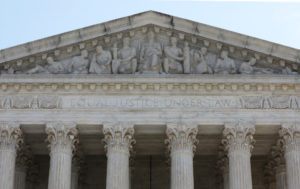
BARRE, Vt. (BP)–After Jesus rose from the dead, He made numerous appearances to individuals, to various small groups of disciples and at one point to 500 of His followers at one time.
Jesus spent a total of 40 days on earth after His resurrection in order to make it clear to everyone who saw Him during that time that He indeed had risen from the dead. After 40 days Jesus and His disciples gathered on the Mount of Olives where He taught them a final lesson. He then ascended up into the clouds. The disciples were understandably perplexed and just stood there, presumably waiting for Him to come back down out of the clouds. An angel appeared to explain that Jesus would indeed come back, when the time was right. In the meantime, Christians were to share their faith with anyone who would listen and urge them also to become followers of Christ. For 2,000 years Christians have awaited the return of Christ and we have shared our faith with others while we watched and waited.
This final event of Christ’s first sojourn on earth is referred to as the Ascension of Christ. It is an important but often overlooked event in the Gospel narratives. While visiting Israel in January, my wife and I went to the Mount of Olives to see where this event took place.
Like so many biblical sites in the Holy Land, there are two different places where tradition says the ascension happened. One is a small cave at the bottom of the Mount of Olives. In the early days of Christianity, this is where most Christians thought the ascension took place.
The other location, which became the preferred location as the Christian church developed — and which is the more popular site for modern Christian pilgrims to visit — is a small church near the top of the Mount of Olives. Called the Church of the Ascension, the tiny church can hold only a handful of people at a time and has no altar or stained glass windows and, unlike most sites in the Holy Land, is quite plain in its appearance. What it does have is a rock in the floor of the church that has the imprint of a foot in it. Tradition says this is Jesus’ footprint and the last place Jesus touched on earth as He began His ascent into heaven.
In a somewhat ironic twist of history, the church is also used as a mosque, since the site is also revered by Muslims. There are few places in the Holy Land where Christians and Muslims both gather to worship, but this is one of them.
Though both theologians and historians debate which of the two spots was actually where Jesus was standing when He ascended into heaven, the rock in the floor of the Church of the Ascension has been recognized as the “official” place of ascension since 384 A.D. It may well be the actual spot. But as I knelt beside that spot and touched the footprint in the rock I could not help but think that the more important issue was not the LAST place Jesus touched before He ascended into heaven, but the NEXT place Jesus will touch on the earth.
The Bible says that the next time Jesus comes, a trumpet will sound and the dead in Christ will rise and those who remain will be caught up with Him in the air. I am guessing we will not be arguing about which rock Jesus last touched when He comes again!
As one stands on the Mount of Olives, the Old City of Jerusalem can be seen off in the distance. If one knows where to look, the Eastern Gate can be seen. There are numerous stories in the Bible of Jesus passing through this gate while he was in Jerusalem. Ezekiel 44:1-3 teaches that the Messiah will one day enter Jerusalem through the Eastern gate. The Eastern Gate was sealed up in 1517 by the Muslim ruler Suleiman. He wanted to keep the Messiah from entering Jerusalem through the gate in fulfillment of the Ezekiel prophecy.
But when Jesus comes again, there is no stone wall that will hold Him back. He will enter through the Eastern Gate and fulfill the age old prophecy. It will be a glorious day for those who love Him. Come, Lord Jesus!
–30–
Terry Dorsett is director of the Green Mountain Baptist Association. For information, visit VermontBaptist.org. Visit his blog at TerryDorsett.com.











